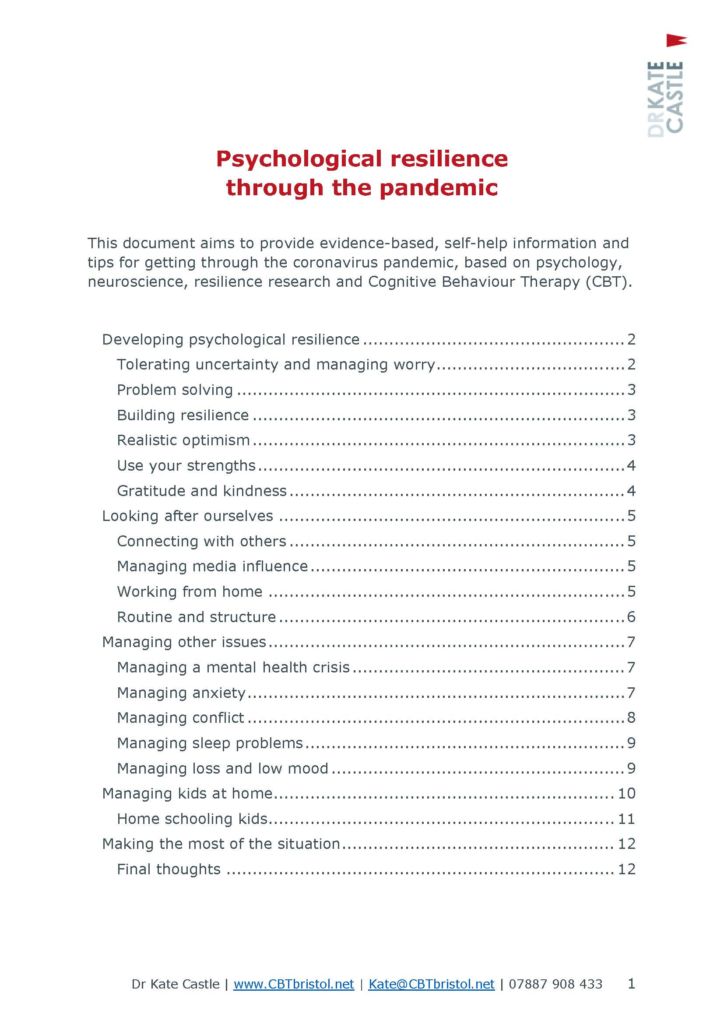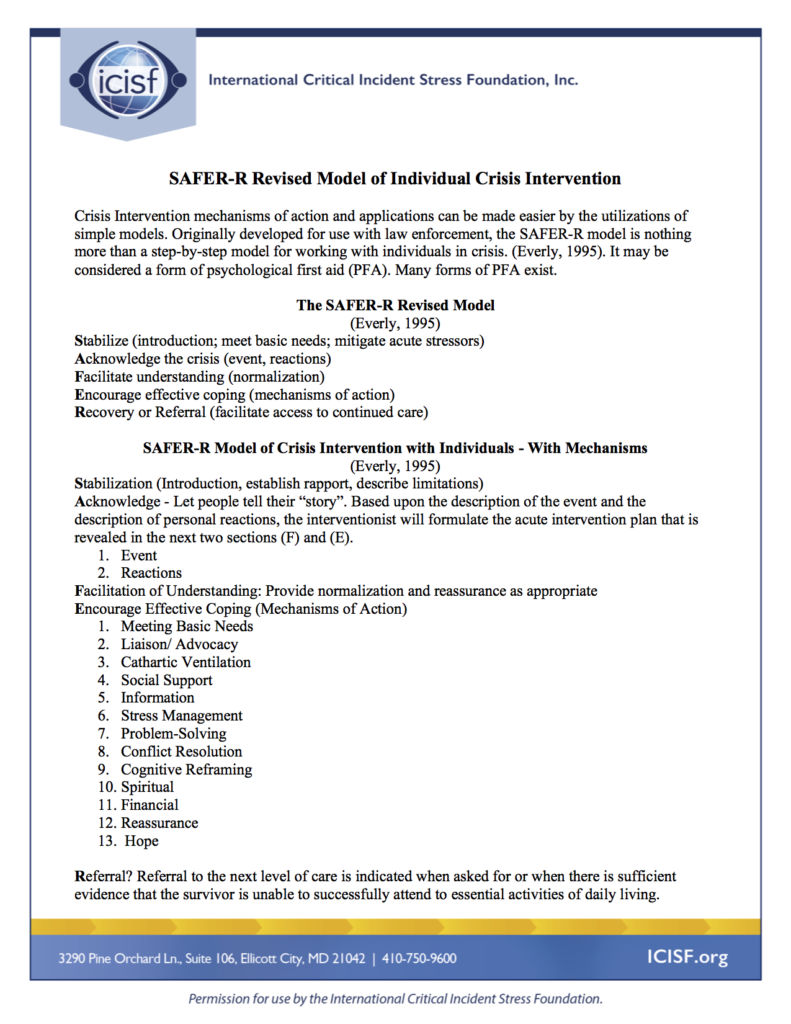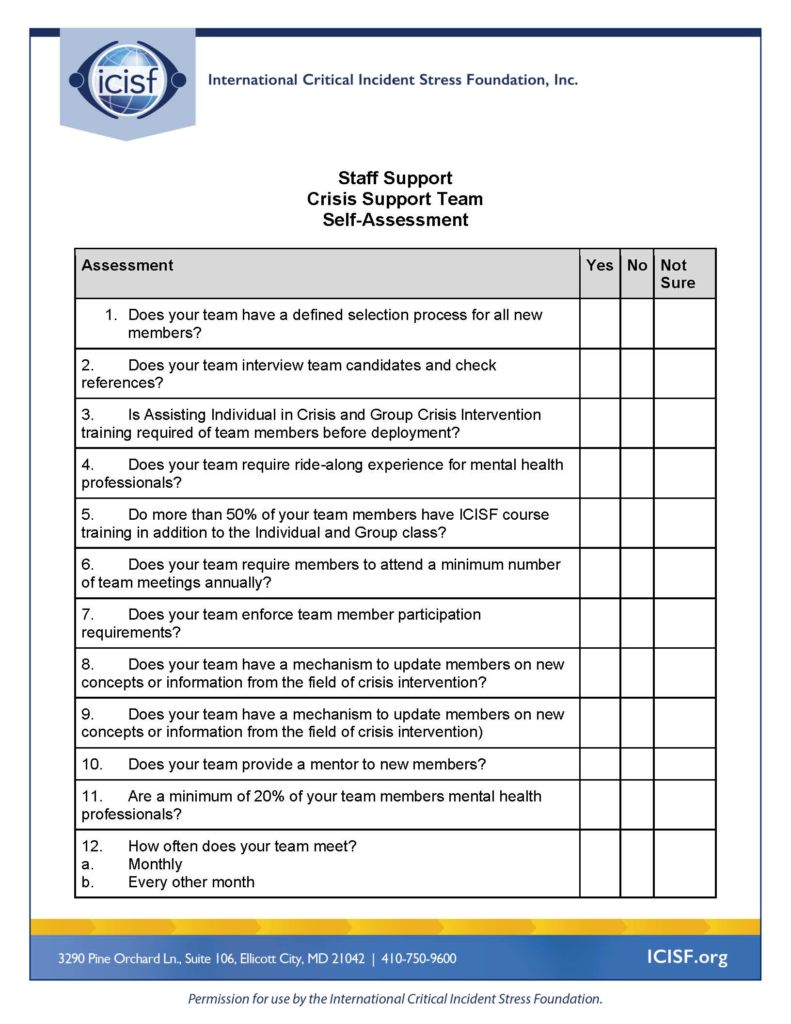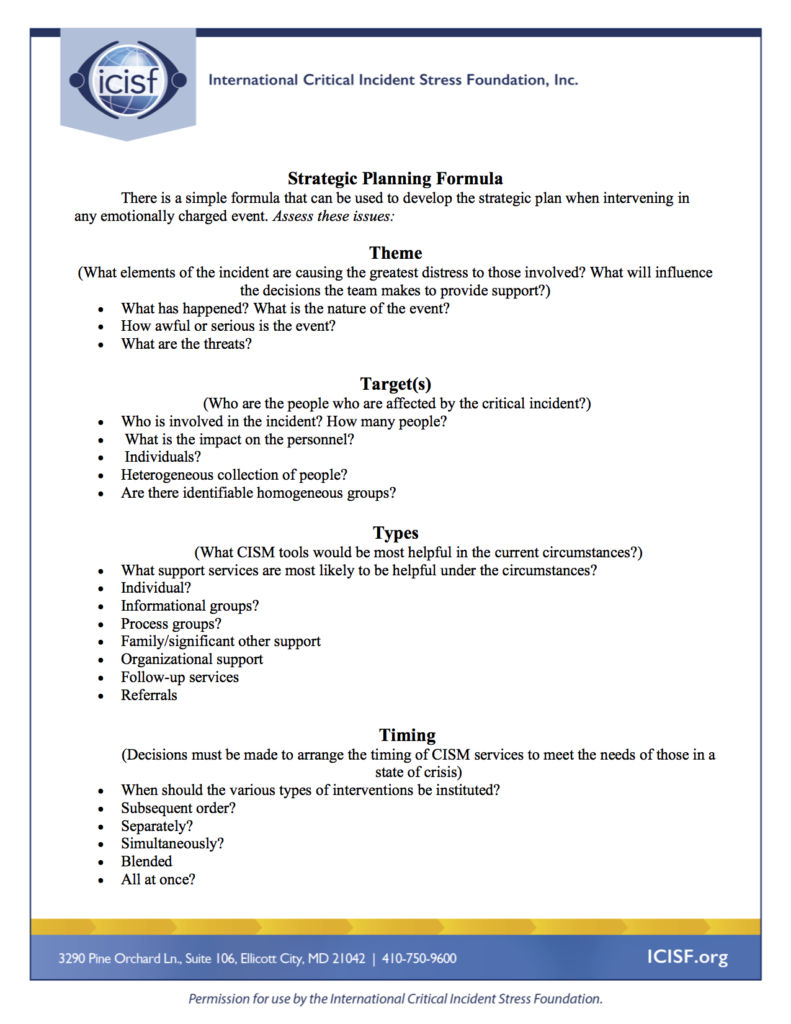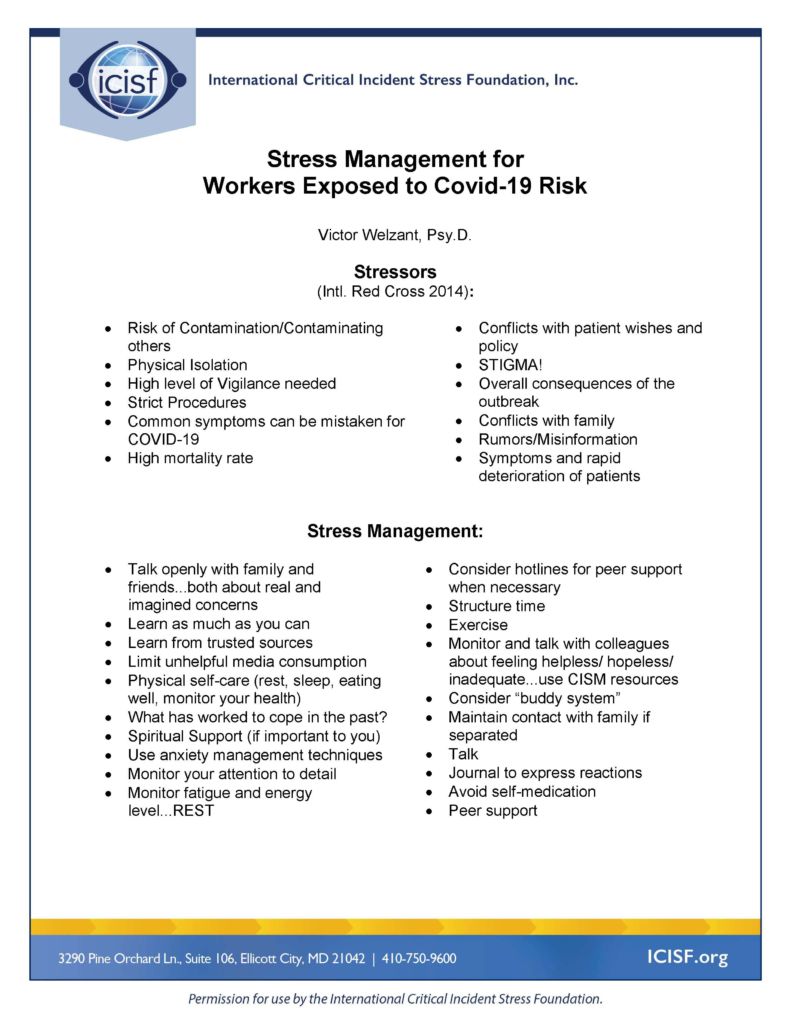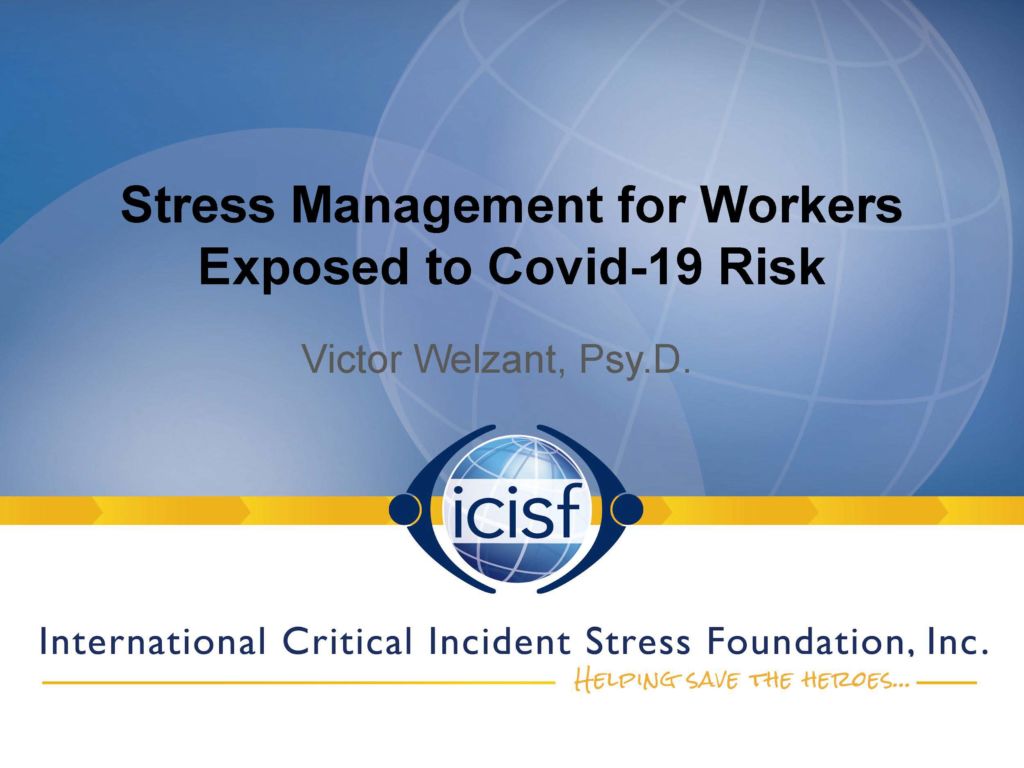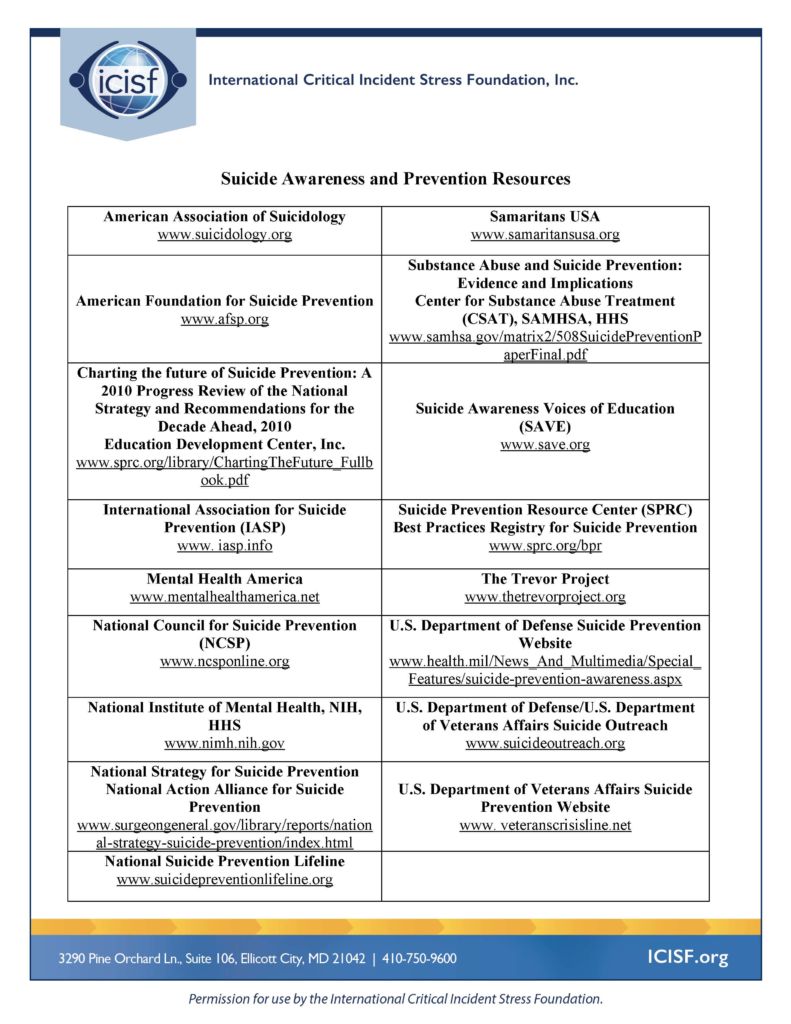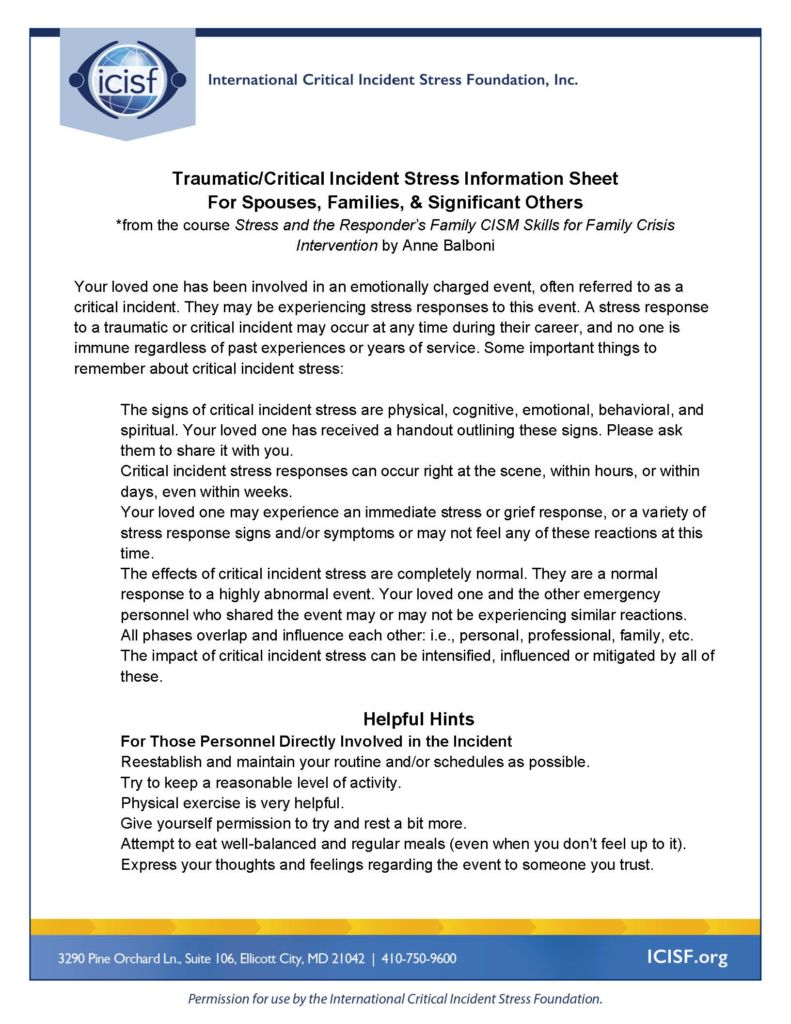Catalog
Showing 37–48 of 51 results
-
Overview
Health and safety legislation exists to protect the mental health of workers, including those at high risk of psychological injury, by separating the responsibilities between the worker (for self and others) and the manager (for the work environment). However, the traditional clinical viewpoint seems to ignore this in favour or seeing all psychological injuries as phenomena in need of medical, psychiatric or psychological expertise once symptoms have emerged and persisted. For example, symptoms of posttraumatic stress disorder (PTSD) have to await the passage of 28 days before diagnosis and treatment, while health and safety law demands immediate action. As crisis intervention is designed for immediate action and clinical guidance requires a delay, crisis intervention appears to be in keeping with legislation created to secure mental health. The tension that exists between the clinician’s advice to ‘watch and wait’ and the peer’s compulsion to ‘act now’ might be resolved by a psychological risk assessment undertaken in the immediate 28 day post-incident period.
Risk assessment for any health condition has three steps: 1. Identify the hazard, 2. Intervene to minimise or eliminate the hazard, and, 3. Monitor to ensure the intervention has worked. An online portal that measures depression, anxiety and PTSD and reports results to the completer themselves has several advantages. First, the assessments can be the same as those likely to used by the clinician should symptoms persist and recovery does not occur. Second, the completer is now aware of their likely condition and the level of risk exhibited by the scores. Third, the organisation can be informed of the overall levels of mental health by demographic variables including team, department and location. With information shown to the worker and statistical patterns shown to the manager both carry their own legal responsibility to act to ‘minimise or eliminate’ the hazard represented by high scores on clinical assessments.
Taking the discrepancy that exists between the clinical viewpoint and the crisis intervention viewpoint a secure online portal has been designed to meet the health and safety demand for risk assessment by informing the worker themeslves (with contact details for support and guidance), informing the organisation’s managers of ‘hot-spots’ of mental health hazards in the workplace and putting both ‘on notice’ that they should now act. The ‘I didn’t know’ claim to justify inaction would become invalid for both parties. This presentation will show how the backdrop of health and safety legislation justifies the use of crisis intervention following critical incidents. It also offers a means by which workers can self-assess and decide how they will tackle the risk they have been informed of, In addition this will allow managers to shape the workplaces structure and policies in light of the patterns emerging from the de-identified data generated by the workers collectively. The potential to use the data generated to underpin mental health policy, identify training needs and show the effectiveness of crisis intervention will be discussed.
Learning Objectives:
Upon completion, participants will be able to:- Recognise key indicators that return to duty is safe following a critical incident
- Assess risks to mental health in compliance with workplace safety and health legal demands
- Complete assessment, intervention and return-to-duty within 28 days of a critical incident
Presenter
-

John Durkin, MSc. PhD
STAGE-28 International
John Durkin Ph.D sits on the Boards of the International Critical Incident Stress Foundation (ICISF), Crisis Intervention Management, Australasia (CIMA) and is co-director of STAGE-28 International offering training, research and consultancy in crisis intervention and psychological risk assessment. His interest in posttraumatic growth took hold in his early career as a firefighter and was later strengthened by his role in the post-9/11 support effort at New York’s fire and police departments. Convinced that critical incident stress management (CISM) delivered by peers had the potential to prevent a number of mental disorders he sought enhancements that might challenge clinical therapies for effectiveness. Further qualifications and training persuaded Dr Durkin that peers delivering crisis intervention in a person-centered fashion would prove superior to standard treatments for PTSD and facilitate posttraumatic growth. A number of pilot projects have supported this and led to training a team of firefighters in CISM, informed by person-centered theory. When Dr Durkin was called to lead the crisis response for the Metropolitan Police Service following London’s 2017 terrorist attacks and Grenfell Tower fire, the same team of firefighters came in support. Over 80 police officers were seen and no report of PTSD or depression had been received three years later. Growth in police officers and firefighters has been widely reported and awaits empirical confirmation in future projects. The legal demands of occupational safety and health were met during this period leading to the design of a psychological risk assessment for use in the emergency, medical and military services.
Handouts
-
Overview
(PDF)
Handouts
-
Overview
(PDF)
Handouts
-
Overview
This helpful PDF provides School Shooting resources from various nationally recognized organizations to assist in providing quick access to reliable and reputable data.
PDF Data collected by: Sam D. Bernard, PhD
BCETS, FAAETC, DAAETC, CT, NCC, CCISMLicensed Psychology Health Service Provider (Tennessee)
Handouts
-
Overview
The purpose of this presentation is to shed light and start the conversation of addressing PTSD in the 911 telecommunications profession. In 2015 I was working as a police dispatcher for Boston police, and successfully managed an officer involved shooting. While I received many awards for how I managed the situation, the fallout of PTSD and lack of support had me making the difficult decision to leave 911 altogether in order to address my mental health. During my journey of healing, I came to the realization that the 911 field was my passion, and that dispatchers everywhere are lacking the support needed in order to continue in the field. I’ve now been back in the filed for 4 years. In addition to sharing my story, I’ve applied my experience to working on NENA’s Wellness Committee, specifically the Peer Support sub-committee, and the Acute Stress working group. Locally, I attended the Group and Individual Counseling Training, and applied to be a part of the local CISM team, which recognizes the important of including 911 personnel for defusing and debriefings. I am currently the point of contact for my agency. Recently, myself and other 911 professionals on the team have been meeting to discuss the 10 top calls for dispatchers, as well as discuss how we can spread the word that CISM teams in our area is a resource available to all dispatchers. In addition to walking viewers through my story – the initial call, the PTSD fallout, and the steps I took to change my mindset and heal – I want to be able to present the dispatcher’s point of view in handling critical incidents, and how agencies can help stop burnout and high turnover by providing resources to their dispatchers.
Learning Objectives:
Upon completion, participants will be able to:- Identify problems 911 professionals face on the job
- Understand how they can contribute to changing the conversation about PTSD in first responders
- Identify obstacles 911 personnel face utilizing a CISM team
Presenter
-

Nicole Janey
Emergency Communications Supervisor
Chelsea Emergency Management
Nicole has been working in the 911 field for 15 years. Highlights of her career include working the Boston Marathon Bombing and the ensuing week, as well as successfully managing an officer down call. Following that event, she took a break from 911 in order to address the PTSD. She returned to 911 with a passion for all things related to 911 mental health and wellness, and is particularly focused on spreading the word about the effects of PTSD in the 911 community, and the need for better support and services for our personnel. She is also involved in the Greater Boston Law Enforcement CISM team, and the National Emergency Number Association. She is active in several subcommittees within NENA's wellness continuum. As a side project, she is currently curating “You Are Not Alone: Portraits of the Gold Line Family” , a photography project that seeks to put a face to all members of the 911 profession, and showcase how everyone is effected by the job, regardless of role.
-
Overview
(PDF)
Handouts
-
Overview
(PDF)
Handouts
-
Overview
(PDF)
Handouts
-
Overview
(PDF)
Handouts
-
Overview
(PDF)
Handouts
-
Overview
Background for this Presentation:
Crisis responders, peer supporters, and caregivers have entered into the world of COVID crisis and trauma. They experience the worst of situations many only read about or see through electronic media. They enter into COVID crisis day after day and hour after hour. Distress and the results of this high level of stress are a constant companion and the ramifications are life altering for most of these providers of care in crisis. Research, education, and training have taught them that stress mitigation is an essential part of their survival. Self-care is fundamental to being a crisis responder and building resiliency is not an option. Unfortunately, most crisis responders have only learned and practiced the physical and emotional aspects of building resiliency, and sometimes they have found it lacking. Rest and exercise, diet and hydration– these are the physical essentials for building resiliency. Building a strong system of social support, catharsis, and reinterpretation – these are some emotional essentials for building resiliency. What if there’s more? What if there are untapped resources for enhancing the resiliency we try to build? What if you could develop a few habits that could multiply your ability to be resilient even through the worst events and times of your life? What is you could do it without going to the gym, without spending a lot of money, or without having to go to a therapist? It can be done. Transformational resilience can happen!Transformation is not a change brought about by simply doing good or improving our behavior. Imagine a person who is undernourished, sickly, and pale, but who puts on makeup to improve their appearance. They may look healthier, but the makeup is only cosmetic, something externally applied. What they really need is a genuine change that results from a life process within.
If that same undernourished, pale person were to eat healthy, nourishing food, a noticeable change would begin to occur. Their color would improve and their body would be strengthened. Eventually, their appearance would become healthy not because of something they did outwardly, but because of something that changed inwardly.
Transformation occurs at the cellular level – the lump of coal, under a great deal of pressure, becomes a diamond. The coal does not become fluorescent nor does it change color – it becomes completely different matter with different characteristics, value, and purpose. Coal does not pretend to be a diamond; it completely becomes a diamond.
Need this Presentation Addresses:
Today, responders face a myriad of COVID challenges on a regular basis. These challenges may be physical, emotional, operational, organizational, financial – in addition to relational, personal, spiritual, mental, behavioral, etc. Unfortunately, most crisis responders have only learned and practiced the physical and emotional aspects of building resiliency, and sometimes they have found it lacking.Each individual may experience COVID challenges differently. However, each responder has the ability to transform his or her present self into a healthier self by using the pressure of the COVID crisis to transform characteristics that will enhance resilience.
Purpose of this Presentation:
To teach crisis responders, peer supporters, and care providers to enhance resilience at the cellular level in a COVID world.Presentation Content:
1. Presentation includes a broad survey of factors that influence resiliency – internal, external, and personality characteristics.
2. Based on the principles of self regulation, actions to choose responses that will enhance resilience will be presented through data, anecdotes, and research.
3. A final action plan with responses, action required, and stress/resilience benefits will be presented.Learning Objectives:
Upon completion, participants will be able to:- List pandemic’s unique stressors
- Describe traditional and transitional resilience
- Describe strategic application of transformational resilience tactics
Presenter
-

Naomi Paget, BCC, DMin, FAAETS
Rev. Dr.
K-LOVE Crisis Response Care / FBI
Rev. Dr. Naomi Paget BCC is the Chair, National VOAD ESCC. Her work in disasters/crises has officially spanned 55 years with Red Cross, FBI, SBC Disaster Relief, ICISF, National VOAD and other crisis relief agencies. Instructor, curriculum writer, awarded Fellowship in American Assoc. of Experts in Traumatic Stress and Fellowship in the National Academy of Crisis Management, she is a published author and K-LOVE CRC and ICISF Approved Instructor for many crisis and trauma courses, consulting for several national and international organizations. She is an adjunct professor at Denver Seminary and Gateway Seminary. She has written several courses in peer support, crisis intervention, and chaplaincy which receive contact hours from Crown College. She received the Life Time Achievement Award from ICISF and from Southern Baptist Disaster Relief, and Distinquished Alumni Award from Golden Gate Baptist Theolocial Seminary.
Handouts
-
(PDF)
Add to cart $0.00Overview
(PDF)
Handouts


